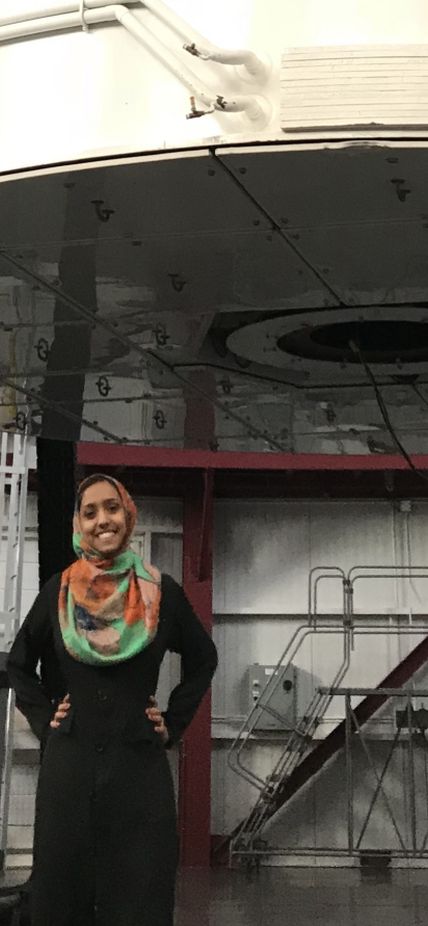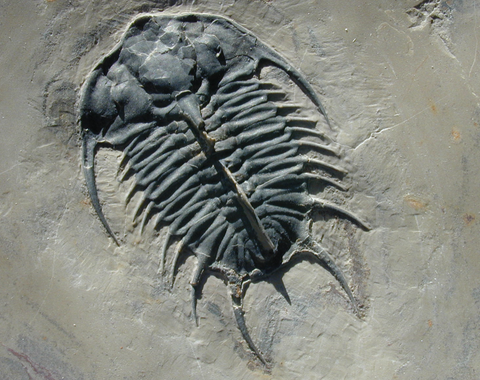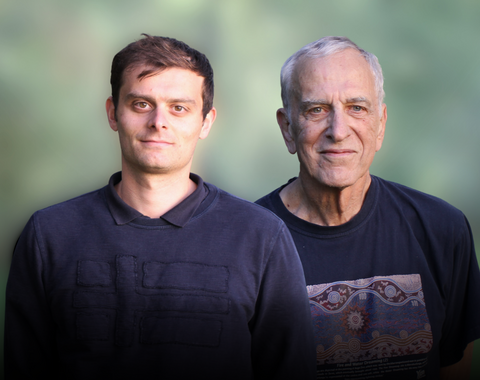When Munazza Alam took a physics class in high school, the “hows” and “whys” of the world began clicking into place for the first time. From then on, she knew she needed to continue seeking answers to the kinds of fundamental questions that physics probes.
With the support of her parents and her high school physics teacher, she decided to chase her curiosity. She received her bachelor's degree in Physics & Astronomy from CUNY Hunter College in 2016 and her Ph.D. in Astronomy & Astrophysics from Harvard University in 2021. (Her Ph.D. advisor was Dr. Mercedes Lopez-Morales, a former Carnegie postdoc herself.)
Now she works as a Postdoctoral Fellow at the Earth and Planets Laboratory where she uses ground-based and space-based telescopes to probe exoplanets and uncover their secrets. Ultimately, she seeks answers to the big questions that she considers to be universal like, “Are we alone?” and “What is our place in the Universe?”
Alam uses her own curiosity to spark it in others. She is extremely active in science outreach as a National Geographic Explorer, which has led to a lot of interesting opportunities, from writing for kids' books to consulting for astrophysicist Barbie. Her most recent feature in the book No Boundaries was released in February 2022 and she will be giving a virtual book talk at Politics and Prose on March 2nd.
In the following interview, we discuss her recent work to uncover the characteristics of an oddly low-density planet, what it’s like to be a woman in STEM, and what it means to be a National Geographic Explorer.
The following interview has been edited for clarity and length.
So first, can you give us a brief introduction? Who are you and how did you get into astronomy?
My name is Munazza Alam and I'm an astronomer studying exoplanets or planets outside of the Solar System. I'm originally from New York City, so I didn't grow up with the view of the night sky or looking up at the stars with a backyard telescope. I found my interest in astronomy later in life—as they say.
I was an undergraduate student studying physics and it's there that I connected with a research group in the astrophysics department at the American Museum of Natural History and got my first glimpse of what it meant and what it felt like to be an astronomer.
Through those experiences, I had my first try at a research project, which I enjoyed very much, and even got to go on my first observing run. And that's where I really fell in love with astronomy.
It was the first time that I had ever seen a view of a dark night sky illuminated by hundreds of thousands of stars. And that's when I was hooked, and I knew that I wanted to do this long-term.
Can you describe generally what you do at the Earth and Planets Laboratory (EPL)?
Currently, I work on observations of the atmospheres of exoplanets using data from large ground-based telescopes and space-based telescopes, like the Hubble Space Telescope, and very soon, once the data comes in, with the James Webb Space Telescope. I'm really excited to learn more about the thousands of planets that we've already discovered and figure out what it's like on these other worlds.
What is the coolest project that you are working on?
So I just wrapped up a project, and I’m in the process of getting that revised and re-submitted for publication.
This project was exciting because I was looking at data from the Hubble Space Telescope of the atmosphere of a planet that has an extremely low mass.
The measured mass and radius of this planet correspond to a very low density. When planets have low densities, either they have really puffy extended atmospheres where their radii are large (like “super-puff” planets) or they have low masses.
One explanation for this particular planet was that perhaps it had rings around it like Saturn has rings. And so I analyzed this dataset, and while we can't within the precision of our observations, confirm if the planet has a ring system, we also can’t rule out the possibility of rings.
It is also possible that this planet may have a hazy atmosphere or it may have a lot of metals (or heavy elements) in its atmosphere. There is still a bit of a mystery about this planet, and I'm looking forward to following it up with future observations to see what else we can learn about
When did you start this project?
It’s exciting because this is a project that I started working on my first day at EPL and spent the last few months working on the analysis that I’ve just wrapped it up. So this is an exciting project, especially since I was able to collaborate with staff scientist Peter Gao on the interpretation of the data as well.
It’s been met with a lot of interest from the community. So that's been really exciting as well.
When you are studying a specific planet, do you ever give it a name?
I get this question a lot, and unfortunately, we don't get to name the planets. At this point, there are thousands of them out there so we don't even have time to come up with names!
We just give them their tag numbers. So this planet that is cool and may or may not have rings around it is called HIP 41378 f. It’s a mouthful and is not a pretty name at all, but it's named after its star (HIP 41378), and then its planet ‘F’ because there are at least five planets in the system, and this is the fifth one out.
You also work with the James Webb Space Telescope (JWST) projects. How are you involved?
I'm on the team for Johanna Teske’s program (“Seeing the Forest and the Trees: Unveiling Small Planet Atmospheres with a Population-Level Framework”) that is looking at the atmospheres of smaller planets called Super-Earths or mini-Neptunes.
So, I'll be leading the analysis for one of the targets that we're going to observe through that program and collaborating with the team on the other planet analyses as well.
And then I'm also involved in another program with external collaborators looking at small planets (Tell Me How I’m Supposed To Breathe With No Air: Measuring the Prevalence and Diversity of M-Dwarf Planet Atmospheres). I am also involved in the Transiting Exoplanet Communities Early Release Science Program, which was going to test all of the instrument modes and configurations of JWST for exoplanet atmosphere science. That program is going to give us the first glimpse of JWST data when it comes in.
I'm excited to be involved in the creation of these programs and designing how we would observe these planets.
When did you first start working with Carnegie?
I’ve been using the facilities at the Las Campanas Observatory since I was an undergrad. I was a junior in undergrad when I traveled to the observatories for my first observing run there and absolutely fell in love with it.
I love the feeling there. It really feels like a family and the staff are super friendly. The food in the cafeteria is also very tasty and the views of the sky are just absolutely phenomenal—seeing the large and Small Magellanic clouds, for example.
It's just a different feeling. Since then, I have also used the facilities at LCO throughout my time as a graduate student, and one of the reasons I was so excited to start as a postdoc at Carnegie was to be able to continue using these facilities.
What has your experience been like at EPL so far?
I started my postdoc in September, so it's been almost six months at this point and my experience has been great so far.
Despite the fact that we are kind of in a hybrid remote in-person mode at the moment, I've had so many wonderful interactions with all the folks at EPL. Everyone's been super friendly and kind. And I'm really glad that as I was getting started, we had some events like the Fall Picnic and the Holiday Party that were a wonderful snapshot of the community here.
I'm looking forward to things going back to normal a bit and getting back into engaging with our wonderful community.
What do you like most about your work?
I think my favorite part is that my work is that it appeals to a range of audiences, and I think that's because astronomy at its root is a fundamentally human endeavor. Humans across centuries and cultures and all over the world have looked up in the cosmos and wondered. “Are we alone” and “What is our place in the Universe?”
And so whether I'm talking to my peers and colleagues or children on a classroom visit, I can sense this interest and excitement. The reasons people are interested vary based on who they are and what their interests are and what their background looks like, but that excitement is the same and that fundamental root interest is always there.
What was the decision to pursue a scientific career like for you? Were there any detractors or people who were particularly supportive?
I think I was one of those kids who always asked their parents how and why, and I think it annoyed them very much. But it just goes to show that I was always very curious about the world around me, and that curiosity wasn’t really satiated until I took my first physics class in high school.
That was the first time I really got to understand what was going on around me and how the world worked. It really fueled that curiosity for me.
I was supported by my parents and my family to pursue my scientific interests. My physics class was also the first time that I had ever met someone who had a Ph.D. in physics—my high school physics teacher. Dr. Jensen.
She was my original inspiration, and she was also extremely supportive of my continuing to study physics. I’m still in touch with her today! I love telling her about my academic journey, where I’m going, and she’s always so happy and excited and proud.
On being a woman in STEM
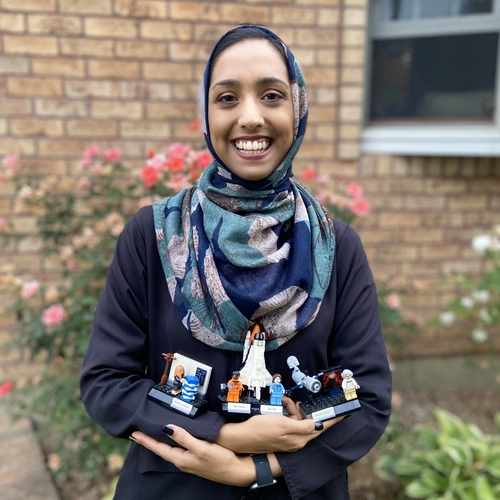
So, you had a female mentor from the very beginning! Have you experienced any challenges throughout your professional career because you’re a woman?
Some challenges, I think, come about just because doing research is hard and it involves asking and trying to answer questions that no one in the world knows the answer to. So, sometimes the biggest challenges can be an internal feeling when you're sitting down and working and focusing – and at the end of the day, you haven't made as much progress as you wish you had. Or sometimes you feel that you're not good enough, or maybe you're not cut out for the job.
And then some of those challenges can be more external.
In 2022 we are moving toward a world that is more accepting of women in STEM fields and encourages more diversity of folks in general. But of course, that's not to say that this is a universal feeling for everyone.
Do you have an example of an external challenge you can share?
For example, one of the challenges that I faced was in regards to not only me being a woman, but being a woman who wears a headscarf.
Once I visited an institute to give a research seminar and at the end of the talk, I was approached by a faculty member who harassed me about my headscarf.
I handled it, I think, fairly calmly with her at the moment. But afterward, I made sure to let my advisor at the time and the chair of my department know, and they took it very seriously and made a point to speak up on my behalf and support me. I’m really grateful for that.
And I think at the end of that, the woman who had approached me really understood why she shouldn't have behaved that way.
I'm glad that there was a halfway happy ending to that story. I'm sorry that you have to go through all of that, especially when you're giving a talk about something that you're an expert in.
Yeah, she did not want to talk about my research at all!
Do you think that there is gender equality in science and technology?
So, we haven't reached gender equality in science and technology just yet, although I'd say that in STEM fields and physical sciences, astronomy is better in terms of gender equality. But there's a lot of work that we still need to do.
There are social science studies that analyze STEM communities and talk about recommendations for how to change and improve the collective culture. I think that one of the fundamental things that we need to focus on is that we don't just need gender equality – we also need gender equity.
And so that means not just having 50% of the people in the room that are women, we also need to make sure that all of the people in the room, regardless of their gender identity, are supported equally and given equal opportunities and equal chances to advance.
That leads to the next question. Do you think it's important to motivate young girls and women to study science?
I think it is so, so important for us to motivate and inspire young women and girls to study science! I think that having women in STEM fields is one way that women, and all people, can contribute to something greater than themselves and also have a unique impact on their communities.
I think that one of the ways that we can start is by supporting young girls and women very early on in the classrooms— starting around first grade. We need to undo those kinds of popular misconceptions that are embedded in society that girls aren't good at math or that boys are meant to build things.
Those stereotypes are the very beginnings of why we see the separation of young female students not pursuing STEM or not engaging their interest in math and science.
Do you have any specific thoughts on how to approach first-graders and bring them into scientific thought processes as young kids?
I mean, at that age, students are just so curious and we need to make sure that we are cultivating that curiosity. If any student is asking "why" or "how" we should encourage them to continue fostering that curiosity.
I think that's the kind of support that I received when I was annoying my parents asking “why” and “how” as a child. And I think that that really helped me not hold back when it came to pursuing my interests in science.
Do you have any female role models in science?
I do! I am very fortunate to have an arsenal of strong female mentors that are my support network. And if I were to name two sources of inspiration for me, one, of course, is Nancy Grace Roman, who is known as the “Mother of Hubble.”
She was involved in the planning of the Hubble Space Telescope and had leadership positions at NASA. And I did my thesis work using Hubble data, so it’s amazing to know that this workhorse instrument that has absolutely revolutionized our understanding of the universe had a really strong, phenomenal woman behind it.
As a reminder of Nancy Grace Roman's hard work, I have a little Lego figurine of her from the NASA women’s Lego set on my desk. So, that's really special to me.
And then my other inspiration is my original inspiration, Dr. Jensen, my high school physics teacher, who was the first woman who had a Ph.D. in physics that I met and the first person who inspired me to pursue physics and my interest in science unhindered.
On becoming a National Geographic Explorer
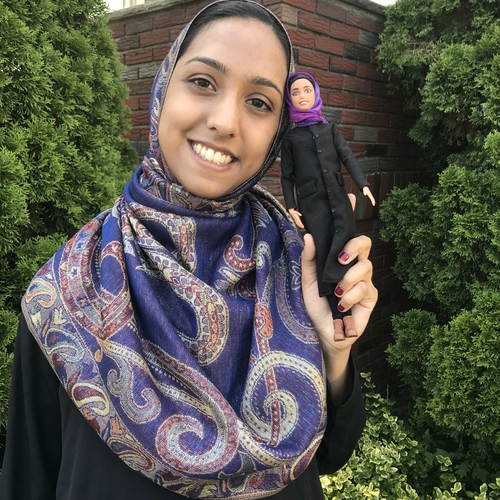
You are also a National Geographic Explorer, right? How do you become a National Geographic explorer and then what has that experience been like?
I applied for National Geographic Explorers Grant back in 2015 when I was an undergrad, and, actually, I applied because I wanted to fund my travel to Las Campanas Observatory. So when I won it, that was actually the grant that supported my first-ever trip to Las Campanas!
The program supports early-career folks who are interested in research, conservation, and exploration, so the grant is a one-time funding opportunity. But after finishing out the grant, I was invited back to do a storytelling boot camp at National Geographic headquarters in downtown DC.
That was really exciting because I was able to get public speaking training, media training, and photography and videography training from some of the world-class experts who work at National Geographic.
Following that, I’ve had several opportunities to continue working with Geographic through a variety of programs doing contract work. That has varied from doing online videos for grade school children to podcasts to writing the forward and chapter introductions for a children's book called Absolute Expert: Space.
I even worked on a project where I was a consultant for Mattel, the company that makes Barbie as they worked on their astrophysicist Barbie line. And afterward, to say thank you, they actually sent me a one-of-a-kind Barbie of me!
Recently, National Geographic released a new book called No Boundaries that features you along with other women scientists and explorers. Can you describe the book for us?
Yes! So, No Boundaries was written by two National Geographic explorers, Gabby Salazar and Clare Fieseler.
The book features 25 women explorers and scientists and their journeys, advice, and sources of inspiration. The idea is that the stories of these women will hopefully inspire the readers to continue on their own journeys of curiosity, whatever their skills or interests are.
I'm curious about what's in the book. Maybe we shouldn't spoil too much, though.
I did an interview with Gaby and Clare a few years ago, and then I sent him some photos of me with Magellan. I also had a photoshoot at some point for another book at Geographic, where I was just posing in front of a plot from one of my papers.
In the book, they have a spread on me and my journey, and I’m also on the back cover!
The copies of the book have been sent to my parents’ house, so I haven't physically held it yet.
Where can I pick up a copy?
The book is available through Politics and Prose and also online through Amazon.
That just about wraps up my questions for today, is there anything else you'd like to add?
I did want to just plug that I'll be doing a virtual book panel highlighting this book on March 2nd at 6:00 pm. at Politics and Prose!
